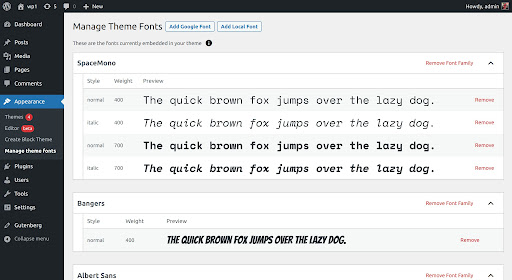Frameworks have become a fundamental part of modern web development. They help developers build applications faster, reduce the amount of code required, and streamline the development process. However, with so many frameworks available, it can be challenging to choose the right one for your project. In this article, we will provide a beginner’s guide to choosing the right framework for your project, covering key factors to consider and popular frameworks that you might want to explore.
Factors to Consider When Choosing a Framework
When choosing a framework for your project, there are several factors to consider. Here are some of the most important ones:
Project Type
The type of project you’re working on can significantly impact the choice of framework. Some frameworks are designed for specific types of projects, such as data-intensive applications, single-page applications (SPAs), or e-commerce sites. Consider the project’s complexity, functionality, and purpose to determine which framework will best suit your needs.
Developer Skill Set
It’s essential to consider the skill set of your development team when selecting a framework. Choosing a framework that aligns with your team’s expertise can help you develop the project more efficiently and with fewer errors. Consider your team’s programming language proficiency and their experience with frameworks and related technologies.
Community Support
Frameworks with large and active communities are typically more reliable and easier to work with. A robust community provides access to extensive documentation, support, and an ecosystem of plugins and libraries. Make sure to choose a framework that has a dedicated community behind it to ensure ongoing support and development.
Scalability
Your framework should be able to scale with your application as it grows. The ability to handle increased traffic, data and functionality is crucial for ensuring that your application can continue to meet user needs over time. Consider the framework’s scalability, including its ability to handle large databases, concurrency, and distributed architecture.
Performance
Performance is a critical factor to consider when choosing a framework. A framework that is slow or inefficient can slow down the application and negatively impact the user experience. Therefore, consider the framework’s performance metrics, including its load time, response time, and memory usage, to ensure it performs well under anticipated conditions.
Considering these factors, you can evaluate different frameworks and choose the one that best suits your project’s requirements. However, keep in mind that no framework is perfect, and there may be trade-offs between different options. Therefore, it’s important to weigh each factor against the others to make an informed decision that will support your project’s long-term success.
Popular Frameworks to Consider
When it comes to popular web development frameworks, there are many options to choose from. Here’s an overview of five of the most popular frameworks and their key features and benefits:
React
React is a JavaScript library for building user interfaces. It’s widely used for developing single-page applications and is known for its ability to handle complex UI interactions. Some of the key features and benefits of React include the following:
- Virtual DOM: React uses a virtual DOM to render changes to the UI more efficiently, resulting in better performance and faster updates.
- Component-Based Architecture: React’s component-based architecture makes it easy to reuse UI elements across the application, improving code organization and maintenance.
- Large Community: React has a massive community of developers and a vast ecosystem of tools, libraries, and resources.
Angular
Angular is a popular framework for building dynamic web applications. It’s known for its declarative syntax and strong typing, making it an excellent choice for large, complex projects. Some of the key features and benefits of Angular include the following:
- Two-Way Data Binding: Angular’s two-way data binding makes it easy to synchronize data between the UI and the application’s data model.
- Dependency Injection: Angular’s dependency injection system helps manage application complexity by simplifying the creation and management of objects and services.
- Built-In Testing: Angular comes with built-in testing capabilities, making it easier to test and maintain your application.
Vue.js
Vue.js is a progressive JavaScript framework for building user interfaces. It’s lightweight, easy to learn, and flexible, making it an excellent choice for small to medium-sized projects. Some of the key features and benefits of Vue.js include the following:
- Reactive Data Binding: Vue.js uses reactive data binding to keep the UI in sync with the application’s data, resulting in a more responsive and efficient UI.
- Component-Based Architecture: Vue.js uses a component-based architecture that makes it easy to reuse code across the application, improving code organization and maintenance.
- Small Size: Vue.js is a lightweight framework that can be added to an existing project without adding too much overhead.
Django
Django is a high-level Python web framework temphasizingrapid development and clean, pragmatic design. It’s known for its built-in administrative interface and robust security features. Some of the key features and benefits of Django include:
- Object-Relational Mapping: Django’s object-relational mapping (ORM) makes it easy to interact with databases and manage data models.
- Built-In Admin Interface: Django comes with a built-in administrative interface, making it easy to manage application content and data.
- Robust Security: Django includes several built-in security features, including protection against common web application security risks.
Ruby on Rails
Ruby on Rails is a popular open-source web framework for building dynamic, database-driven web applications. It’s known for its convention-over-configuration approach and emphasis on developer productivity. Some of the key features and benefits of Ruby on Rails include:
- Convention Over Configuration: Ruby on Rails follows a convention-over-configuration approach, reducing the need for developers to write boilerplate code and improving productivity.
- Modular Design: Ruby on Rails is designed to be modular, making it easy to add new functionality and manage application complexity.
- Strong Community: Ruby on Rails has a large and active community of developers and a wealth of resources and plugins to help streamline development.
Choosing the right framework for your project depends on several factors, including project requirements, team expertise, and development goals. By understanding the features and benefits of these popular frameworks, you can make an informed decision that supports your project’s long-term success.
How to Choose the Right Framework for Your Project
Choosing the right framework for your project can be a daunting task, especially if you’re new to web development. To help you make an informed decision, it’s essential to evaluate the factors listed in section II against the features of each framework listed in section III.
Project Requirements
Consider the specific requirements of your project, such as the type of application you’re building, the expected traffic volume, and the need for scalability. For example, if you’re building a large-scale application that requires high scalability, frameworks like Angular or Ruby on Rails may be a good choice. On the other hand, for smaller projects, lightweight frameworks like Vue.js or React might be a better fit.
Developer Skill Set
Consider the skills and expertise of your development team. If your team has experience with a particular language or framework, it might be more efficient to stick with what they know. However, if you’re looking to learn a new framework or language, choosing a popular framework with a strong community like React or Angular could provide valuable support and resources.
Community Support
Consider the size and activity of the community surrounding each framework. Frameworks with large communities, like React or Ruby on Rails, often have a wealth of resources, plugins, and support available, making development more efficient and less time-consuming.
Scalability
Consider the scalability of the framework. Some frameworks, like Angular, are built with scalability in mind and are designed to handle large, complex applications. Others, like Vue.js, may be better suited for smaller projects.
Performance
Consider the performance of the framework. Frameworks like React and Vue.js are known for their fast rendering and minimal overhead, making them a good choice for applications that require high performance.
When weighing these factors, it’s important to prioritize them based on the specific needs of your project. For example, if scalability is a top priority, you might want to focus on frameworks like Angular or Ruby on Rails. On the other hand, if you’re looking for a lightweight framework that’s easy to learn, Vue.js or React might be a better fit.
Ultimately, the right framework for your project will depend on your specific needs and goals. However, by evaluating these factors and weighing them against the features and benefits of each framework, you can make an informed decision that supports your project’s success.
Conclusion
Choosing the right framework for your project can be challenging, but it’s essential to consider the specific requirements of your project before making a decision. Factors like project type, developer skill set, community support, scalability, and performance are critical to consider. Once you have identified your requirements, you can explore popular frameworks like React, Angular, Vue.js, Django, and Ruby on Rails. Then, with a little research and careful consideration, you can find the perfect framework for your project.
Source link






Leave a Reply